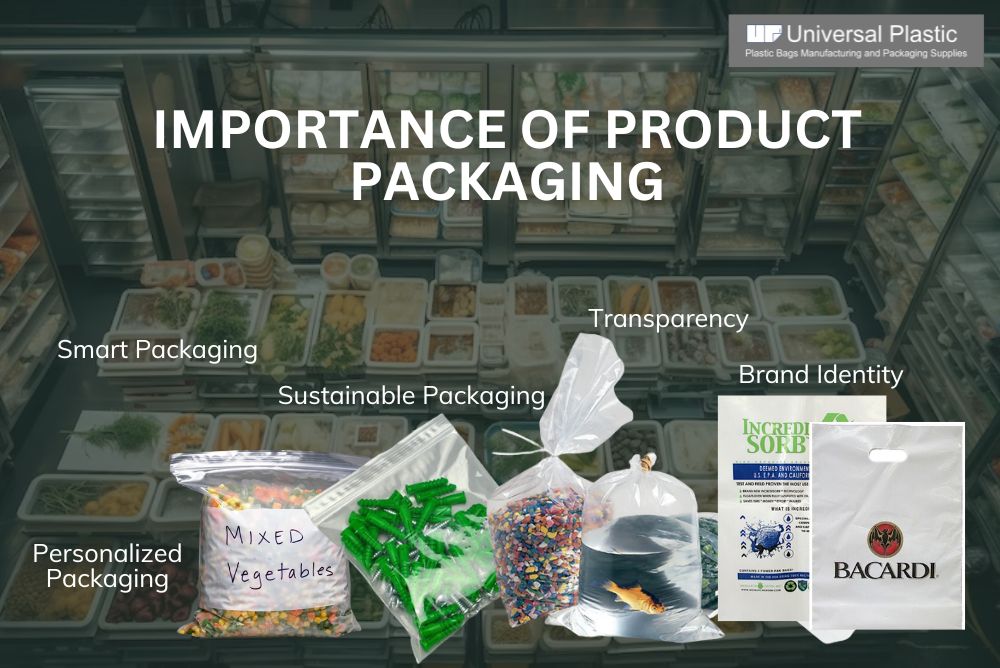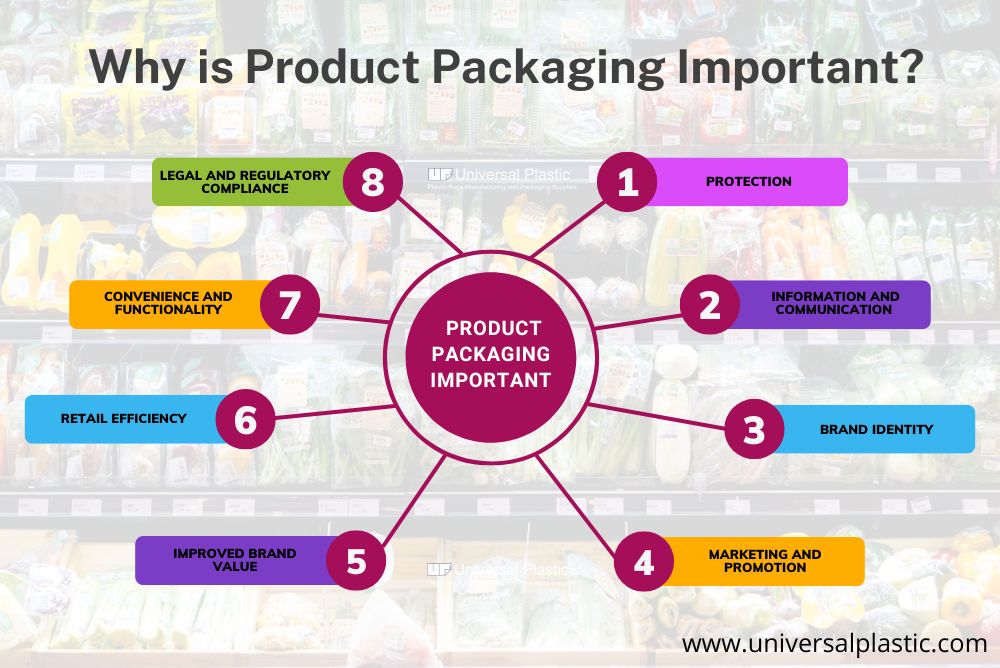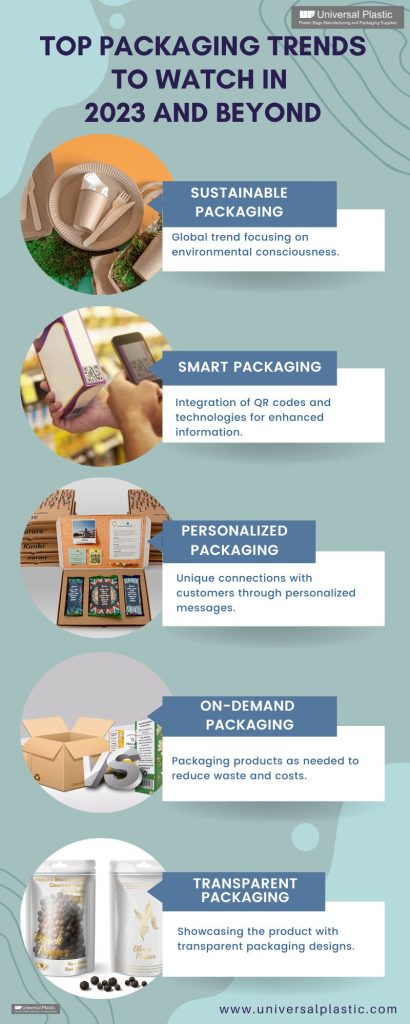
Product packaging serves as the first point of contact between a potential buyer and a brand. Primarily, it influences a customer’s brand perception and purchasing decisions. A customer walking through a supermarket builds an impression of the brand by looking at the packaging. Impressive and safe packaging communicates the brand’s credibility. Beyond this brand impression, good packaging also helps protect the product during storage and shipping. Despite all these advantages, many businesses pay little attention to packaging and make wrong choices. This post offers insights into the importance of product packaging, its types, factors of consideration while choosing them, and more.
Why is Product Packaging Important?
Product packaging is essential for various reasons and plays a significant role in the product success, and the overall business. Here are some reasons why product packaging is a significant aspect of any business.
- Protection: The product packaging helps protect the product from contamination, spoilage, and damage during handling, transportation, and storage. Packaging materials envelop the product and create a barrier against air, moisture, light, and physical impact. This helps ensure the safety of the product during its journey.
- Information and Communication: Packaging features essential product information, including product name, ingredients, description, usage instructions, safety warnings, nutritional facts, etc. This information inspires consumers to understand the product features, benefits, and make informed decisions about it.
- Brand Identity: Packaging is always an extension of brand promotion. Most people get attracted to the product’s packaging by staring at them from supermarket shelves. Well-designed packaging helps reinforce brand identity and create a positive impression in user’s mind. Recognizable packaging can help foster brand loyalty in the minds of a customer. For instance, whenever a person thinks of a particular brand of chocolate, its packaging comes to the mind. An attractive packaging often becomes part of a memory.
- Marketing and Promotion: Many businesses use packaging as a marketing tool. Innovative and attractive packaging designs percolates a buyer’s consciousness and creates an emotional connection with them. Many businesses use packaging to promote their special offers or to connect customers to other touch points.
- Differentiation: Innovative product packaging helps a brand to create a distinct identity in the competitive market. Unique packaging materials, designs, as well as features can help any brand to stand out in a crowded marketplace.
- Improved Brand Value: Most customers get drawn to the packaging. They tend to think highly of brands that invest in aesthetically pleasing and high-quality packaging. It gives them confidence that they are investing in valuable product, and allows businesses to justify their high price points.
- Retail Efficiency: A good packaging helps users to store, display, and organize products on shelves. It will help them minimize handling efforts for retailers and optimize shelf space.
- Convenience and Functionality: Packaging helps protect the packaged items from the external environment but also improves the user experience. For instance, packaging with features like tamper-evident seals, and resealable options, can make the product more user-friendly and improve customer satisfaction.
- Legal and Regulatory Compliance: Packaging across specific industries must adhere to legal and regulatory requirements. Choosing the right packaging will help retailers to comply with legal and regulatory obligations set by different industry organizations. For instance, packaging used in food and pharmaceutical industries must meet FDA regulations.

Branding Impact of a Well-Designed Packaging
A well-designed packaging can benefit brands and users in many ways. However, it can have a significant impact on the branding. Here are some ways how a good packaging can impact branding.
- First Impressions: The appearance of the packaging has much to do with how people perceive the inner product to be. The use of the right color, font, logo, and images has impact on human psychology. For instance, people sometimes associate minimalist designs with sophistication and bright colors with a sense of enthusiasm and urgency. Packaging can impact a buyer’s emotions and help create a sense of connection with the brand. Packaging that tells a brand story instills a sense of trust and loyalty in a buyer.
- Brand Recognition: Packaging is an extension of branding. Distinctive packaging helps establish a strong brand recognition. When consumers see an attractive product packaging on the shelf, they can quickly associate it with the brand. For instance, people would associate a half-eaten apple with the logo of Apple.
- Communicating Brand Values: Packaging design helps communicate the brand's mission, values, and story. Packaging material, logo, colors, images, and messaging on the package can help convey the brand's commitment to quality, sustainability, or social responsibility. The packaging also helps to build a deeper connection with consumers who share those values.
- Differentiation: A well-designed package will help create brand differentiation. Innovative and unique product packaging designs help create a distinctive presence that attracts customers and ignites their interest in the product.
- Word-of-mouth and Social Sharing: Unique and eye-catching packaging inspire consumers to share their product experiences on social media. Based on their brand perception, they may also recommend the product to friends and family. This word-of-mouth marketing can boost brand visibility.
Types of Product Packaging
Product packaging comes in various materials, such as plastic, paper, and biodegradable and compostable packaging. This section offers insights into product packaging made from different materials.
- Plastic Bags: These are popular and used for packaging different types of products right, from food to electronics. Plastic bags are chosen due to their durability, flexibility, and low cost. They come in various forms:
- Low-density polyethylene (LDPE) bags: LDPE is a flexible, soft, and lightweight thermoplastic material, which is used for making bags for carrying lightweight items like clothes, food items, and small goods. It is not suited for carrying items that demand high-temperature resistance, stiffness, and structural strength.
- High-density polyethylene (HDPE) bags: HDPE is a soft thermoplastic material that can withstand temperatures from -148 to 176 degrees Fahrenheit and is non-leaching, UV and chemical resistant. HDPE bags are used for retail packaging and grocery shopping.
- Ziplock bags: These plastic bags are resealable and are used for storing perishable items. They can be used for storing food, jewelry or organizing things in a cupboard.
- Anti-static bags: These bags are vapor, radiation, water, and greaseproof and protect the packaged item from electrostatic discharge. Anti-static bags are also known for static shielding or ESD bags and can be easily shut, taped, tied, and heat-sealed, depending on the requirement.
- Stand-up pouches: These plastic pouches can stand upright, which is why the name. These pouches are ideal for packaging granulated products or liquids.
- Paper Bags: These bags are made from paper and often considered as an eco-friendly alternative to plastic bags. The following are different types of paper bags used for packaging.
- Standard paper bags: These bags are made from white or brown paper and come in various sizes. They are used for shopping, as well as packaging purposes.
- Kraft paper bags: These bags are made from natural fibers, and are often used in retail stores for packaging and carrying items like gifts, groceries, fast food, clothes, etc.
- Laminated paper bags: As the name suggests, these bags have matte or glossy finish, and laminated surface. This lamination protects from wear and tear and moisture. Laminated paper bags are used for carrying luxury or delicate products.
- Recycled paper bags: These bags are made from recycled paper, and it is used for carrying clothes and delicate retail items. Recycled paper bags are an ideal choice for packaging delicate materials.
- Biodegradable and Compostable Packaging: As the name suggests, these bags are made from different biodegradable and compostable materials, which will easily break down over a certain time period. With the sustainability efforts gaining traction, retailers and businesses are using these bags in their marketing. The following are two popular types of biodegradable and compostable packaging bags used.
- Bio-based plastic bags: The bags are made from materials, such as sugarcane, cornstarch, or potato starch, which assure biodegradability.
- Compostable materials: These bags are biodegradable and break down in composting facilities, which helps reduce environmental impact.
Your choice of packaging material would depend on various factors such as the product to be packaged, cost, sensitivity, and environmental considerations.
Top Packaging Trends to Watch in 2023 and Beyond
The packaging industry is evolving, and new trends are emerging, too. In 2023, businesses can take note of the following trends.
- Sustainable Packaging: This is a global trend, which is here to stay. As consumers become environmentally aware, they make choices that ensure sustainability and help them reduce their carbon footprint. Many brands are replacing their single-use plastic packaging with paper, glass, metal, wood, pulp, and cloth packaging.
- Smart Packaging: This packaging features QR codes and other technologies that help gain information about the product, such as ingredients, freshness, origin, and nutritional information.
- Personalized Packaging: This type of packaging is gaining popularity. It helps businesses to connect with customers in unique ways. For instance, personalized packaging may contain the consumer’s name and messages, such as birthday message, thank you message, and so on. The demand for this type of packaging is increasing. Many premium brands are already embracing this type of packaging. For instance, Licious prints the image of loyal customers on the box. Similarly, Coca-Cola prints the customer’s name on their soft drink containers.
- On-demand Packaging: As the name suggests, on-demand packaging is a trend that allows businesses to package the products as needed. Many companies are embracing this trend, as it helps them reduce the waste generated using regular packaging. For instance, instead of stocking premade packaging materials, the business may order customized packaging materials to fit specific products. This helps them save money, and use the right sized material to package their product.
- Transparent Packaging: This type of packaging is preferred by food and cosmetics brands that allow people to get a glimpse of the packaged item. Blood bag wine packaging and jam jar booze packaging are some brilliant examples of this type of packaging.

Tips to Choose the Right Product Packaging for Your Brand
There is an abundance of variety when it comes to product packaging materials, designs, and types, however, not all materials are the same. Thus, choosing the right product packaging requires careful consideration of factors. The following pointers will guide you to the right selection.
- What is your target audience? What is the product to be packaged: You must start by understanding the product, the type of packaging it requires, and how it benefits your customers. Additionally, analyze your customer’s preferences, their lifestyle, and buying behavior to align the brand packaging.
- Does the packaging reflect your brand identity? A brand is known by many things, however, the packaging says volume about its signature style. Many people associate a product packaging with the brand's values and personality. How do you want people to perceive your brand – luxurious, fun-friendly, eco-friendly, minimalist, or helpful? The choice of the packaging would depend on this question. Whatever packaging you choose, ensure it conveys your brand message properly.
- Does the packaging serve the purpose? The primary function of any packaging is to protect a product enveloped within. Check if the packaging is reliable, durable, easy to use, and serves the purpose of protects the product. For instance, if you are trying to invest in packaging for your electronic brand, ensure you invest in anti-static packaging.
- Do you want to follow industry regulations? This is an important consideration factor if you are working in the food and beverages processing industry. The packaging chosen must comply with FDA regulations.
- Does your packaging represent your brand in a good light? Distinctive packaging can make a difference in a competitive landscape. You can customize the packaging with your brand logo, name, and color scheme. Despite these, do people still feel disconnected with your brand? Generally, this happens when they find the packaging cheap or a misfit with their expectations.
- Is your packaging user-friendly and environment-friendly? A user-friendly packaging can be environmentally friendly and vice versa. A user-friendly packaging is one that most users can open easily. However, environment friendly packaging is the type of packaging made of sustainable materials, which helps users to reduce waste. If you are using quality packaging, many people may retain them and use them multiple times before discarding them. By doing so, they will remember your brand and minimize their waste.
Is your packaging budget-friendly? Although aesthetics is essential, your chosen packaging must align with your budget. You must consider the material cost, customization, and any special features you wish to include.
A product packaging not only represents your brand identity but also influences the consumer experience. Hence, thoughtful choices must be made. The packaging can protect the stored item, influence a customer’s buying decision, enhance brand loyalty, attract new customers, and contribute to the overall brand success.
If you are plan to invest in quality product packaging, source them from trusted suppliers like Universal Plastic. The company specializes plastic bags manufacturing and packaging supplies in the US. It offers various types of plastic bags, including anti-static bags, Ziploc resealable bags, vacuum seal plastic bags and pouches, medical bags, pallet covers, shopping bags, trash bags, and so on. You can customize these bags with your brand information and messages. Universal Plastic offers custom wholesale plastic bags in competitive prices, which helps businesses to save on their packaging supplies. It can also provide personalized and on-demand packaging to meet your branding requirements. Get in touch with the team at the company to discuss your requirements.
